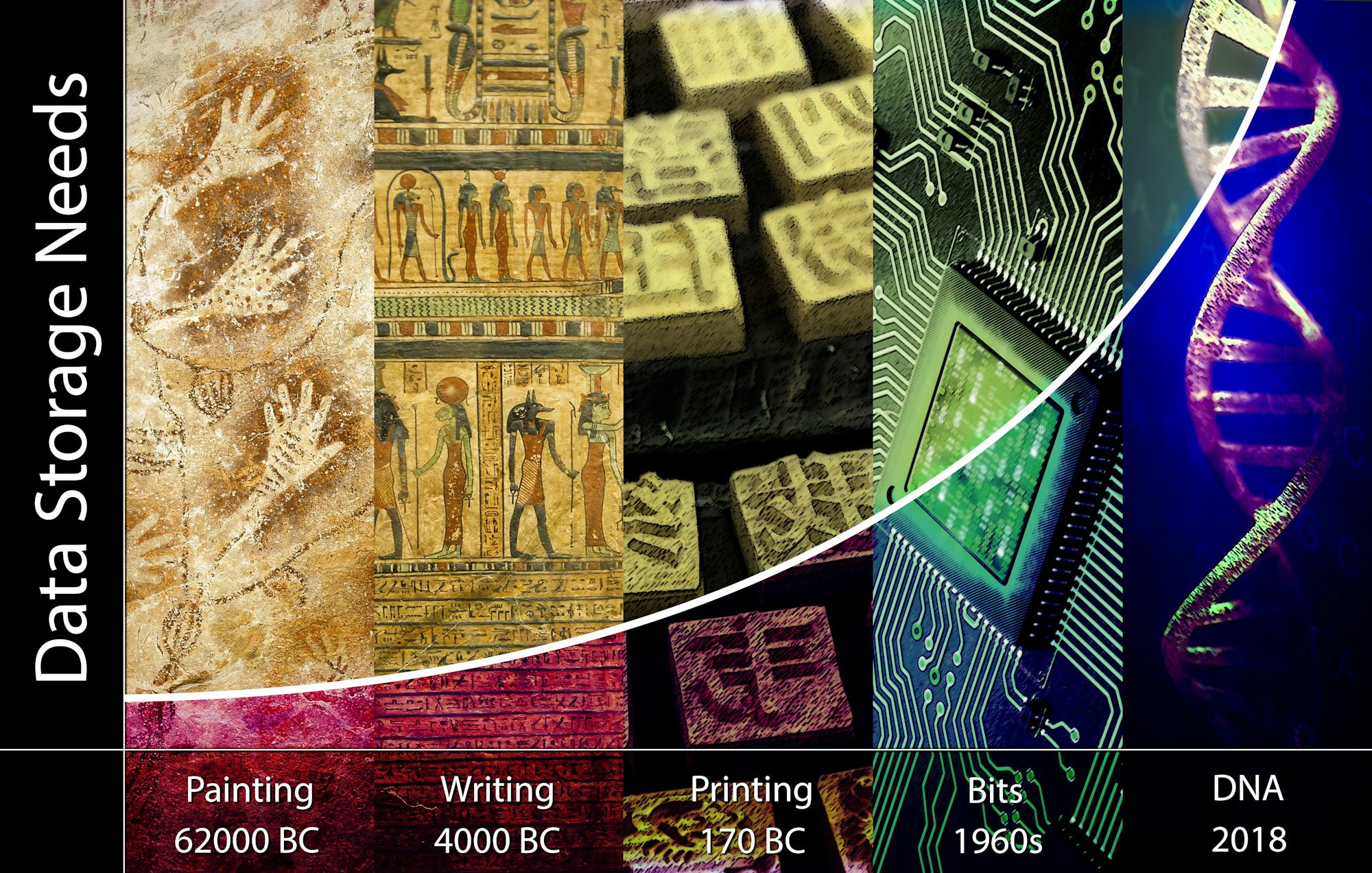The digital age swims in a deluge of data. From cat videos to complex genomic sequences, humanity generates exabytes upon exabytes, straining the capacity of conventional storage media. A tantalizing alternative has emerged: deoxyribonucleic acid, or DNA. Nature’s own hard drive, DNA offers a storage density that dwarfs even the most advanced solid-state drives. But how much data can truly be crammed into this microscopic marvel?
Let’s first unravel the fundamental unit of DNA data storage: the nucleotide. DNA comprises four nucleobases – adenine (A), guanine (G), cytosine (C), and thymine (T). These bases, arranged in a specific sequence, form the genetic code. To translate digital information into DNA, we map binary data (0s and 1s) onto these bases. A common approach assigns ’00’ to A, ’01’ to G, ’10’ to C, and ’11’ to T. Thus, each nucleotide encodes two bits of information.
Consider the sheer scale of potential. A single gram of DNA, in theory, can store approximately 215 petabytes (PB) of data. That’s 215 million gigabytes! To put that into perspective, imagine storing the entire contents of every book ever written, multiple times over, in a vial smaller than your pinky nail. This extraordinary density stems from DNA’s ability to pack information at the molecular level.
The comparison to current storage technologies is stark. A high-end solid-state drive (SSD) might offer a storage density of around 1 terabyte per cubic inch. DNA, in contrast, achieves densities orders of magnitude higher. It’s akin to comparing a sprawling library to a microscopic inscription capable of holding the same information.
However, the theoretical capacity is only the starting point. Practical limitations influence the amount of data we can realistically store and retrieve. These limitations arise from several key factors:
Synthesis and Sequencing Errors: Writing data into DNA involves synthesizing custom DNA strands. Reading data requires sequencing those strands. Both processes are prone to errors. Synthesis errors can introduce incorrect bases into the sequence, while sequencing errors can misread the bases during retrieval. Error correction codes are crucial to mitigate these errors, but they also reduce the effective storage capacity.
Polymerase Chain Reaction (PCR) Bias: PCR, often used to amplify specific DNA sequences for easier sequencing, can introduce bias. Certain sequences might be amplified more efficiently than others, leading to skewed representation of the stored data. This bias can complicate data retrieval and further reduce the effective storage capacity.
Sequence Context Effects: The efficiency of DNA synthesis and sequencing can be influenced by the surrounding sequence. For example, long stretches of the same base (e.g., AAAAA) can be difficult to synthesize and sequence accurately. This “sequence context effect” necessitates careful sequence design to avoid problematic motifs.
Cost Considerations: While the storage density of DNA is unparalleled, the cost of DNA synthesis and sequencing remains a significant barrier. Synthesizing long stretches of DNA with high accuracy can be expensive. Similarly, high-throughput sequencing, while becoming more affordable, still represents a considerable investment.
Data Retrieval Complexity: Retrieving specific data segments from a pool of DNA molecules requires sophisticated techniques. One approach involves using PCR primers that target specific sequences. However, designing primers that are highly specific and efficient can be challenging, especially for large datasets. Alternative techniques, such as nanopore sequencing, offer the potential for faster and more targeted data retrieval, but they are still under development.
Despite these limitations, the field of DNA data storage is rapidly advancing. Researchers are developing new techniques to improve the accuracy of DNA synthesis and sequencing, reduce PCR bias, and optimize sequence design. Error correction codes are becoming more sophisticated, allowing for higher data densities with acceptable error rates. Furthermore, innovations in nanopore sequencing and other data retrieval methods promise to streamline the process of accessing stored information.
The future of DNA data storage hinges on overcoming these technological hurdles. As synthesis and sequencing costs continue to decline and the reliability of these processes improves, DNA data storage will become an increasingly viable option for archiving vast amounts of information. Imagine a future where entire libraries, museums, and archives are stored within a few grams of DNA, easily preserved and readily accessible. This is not merely science fiction; it’s a rapidly approaching reality. It represents a paradigm shift in how we think about data storage, moving from bulky, energy-intensive devices to compact, resilient, and incredibly dense molecular archives. It’s a journey from clunky magnetic reels to the elegant spiral staircase of the genome – a profound transformation in the very fabric of information technology.










Leave a Comment